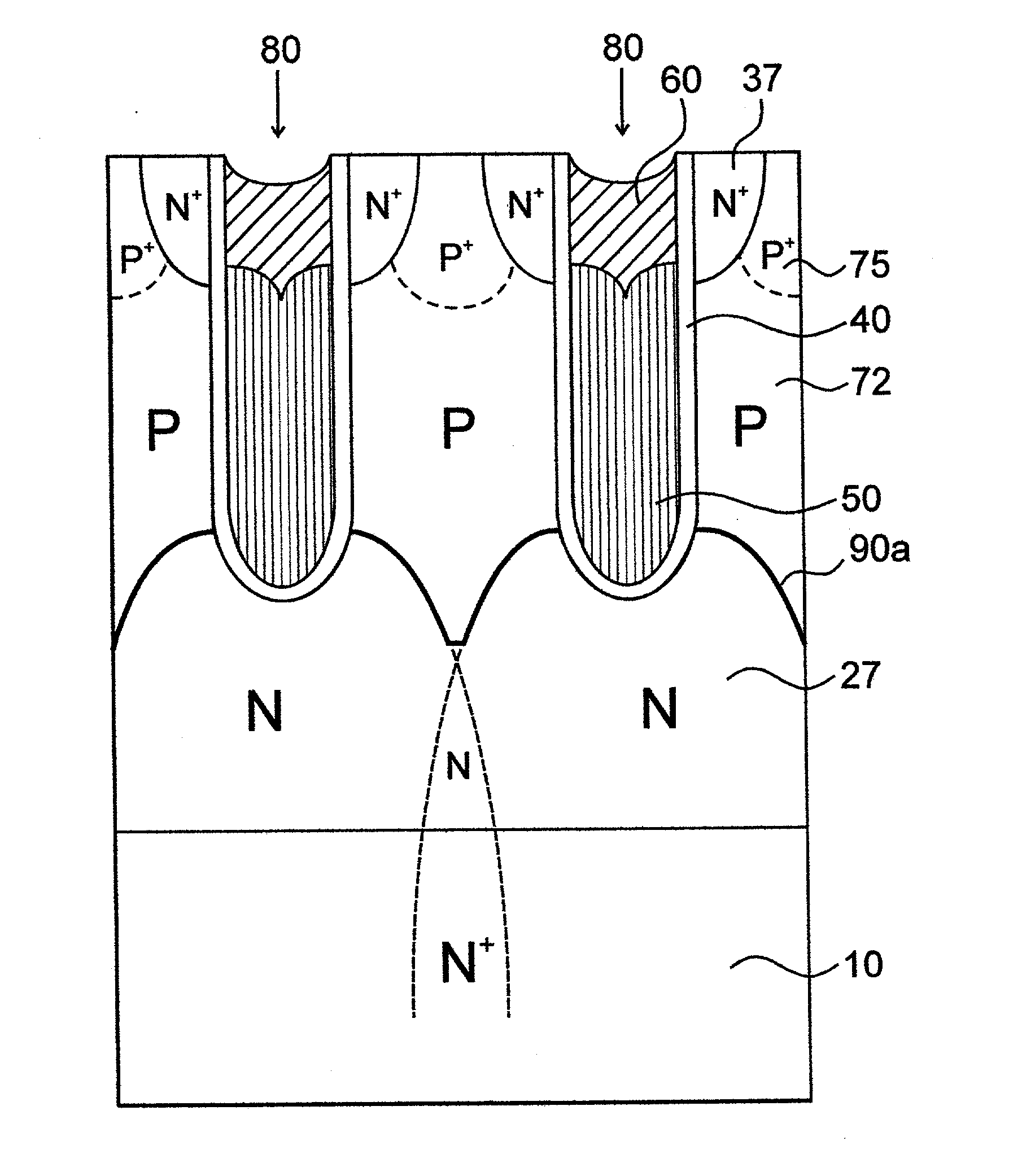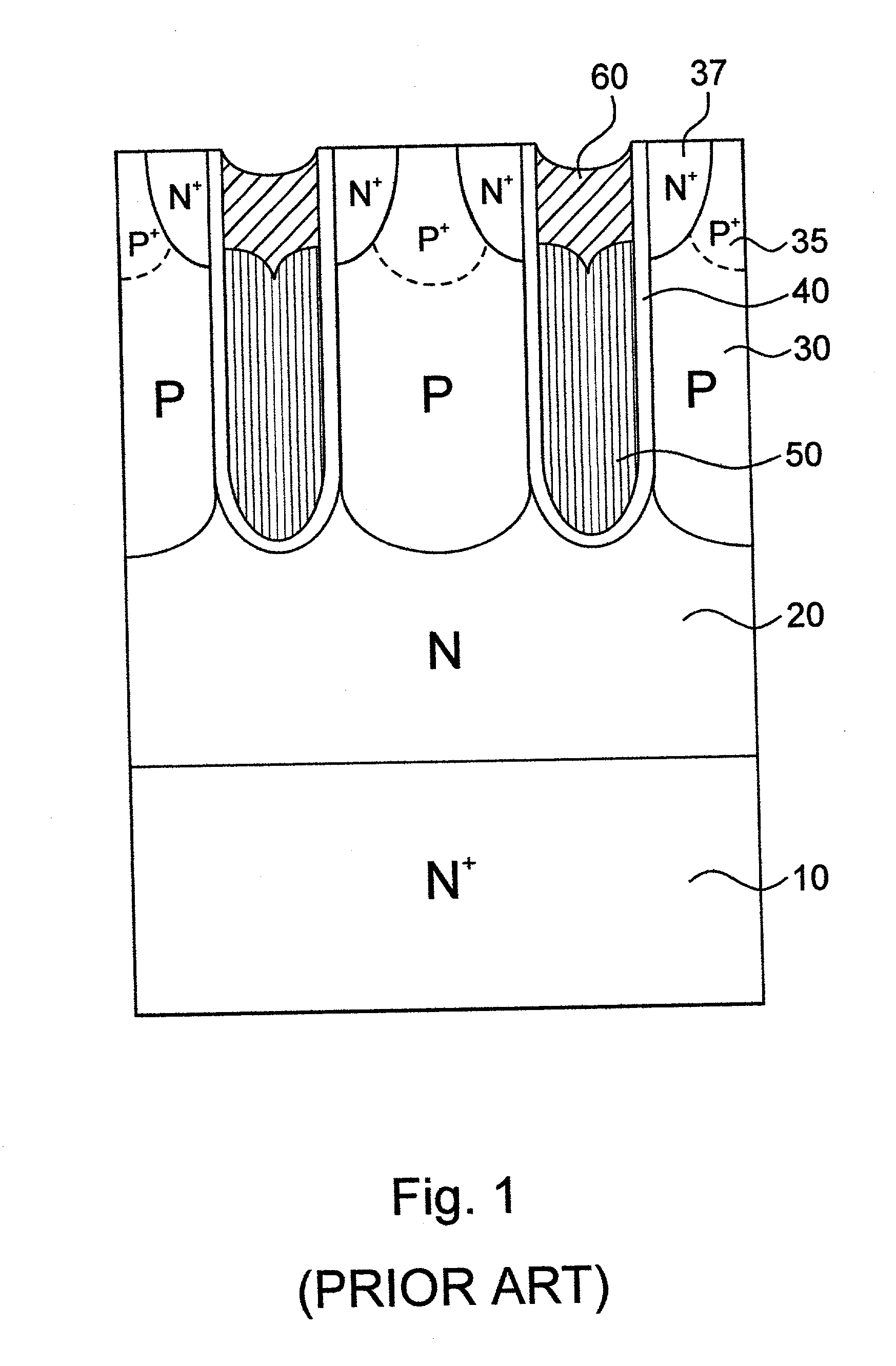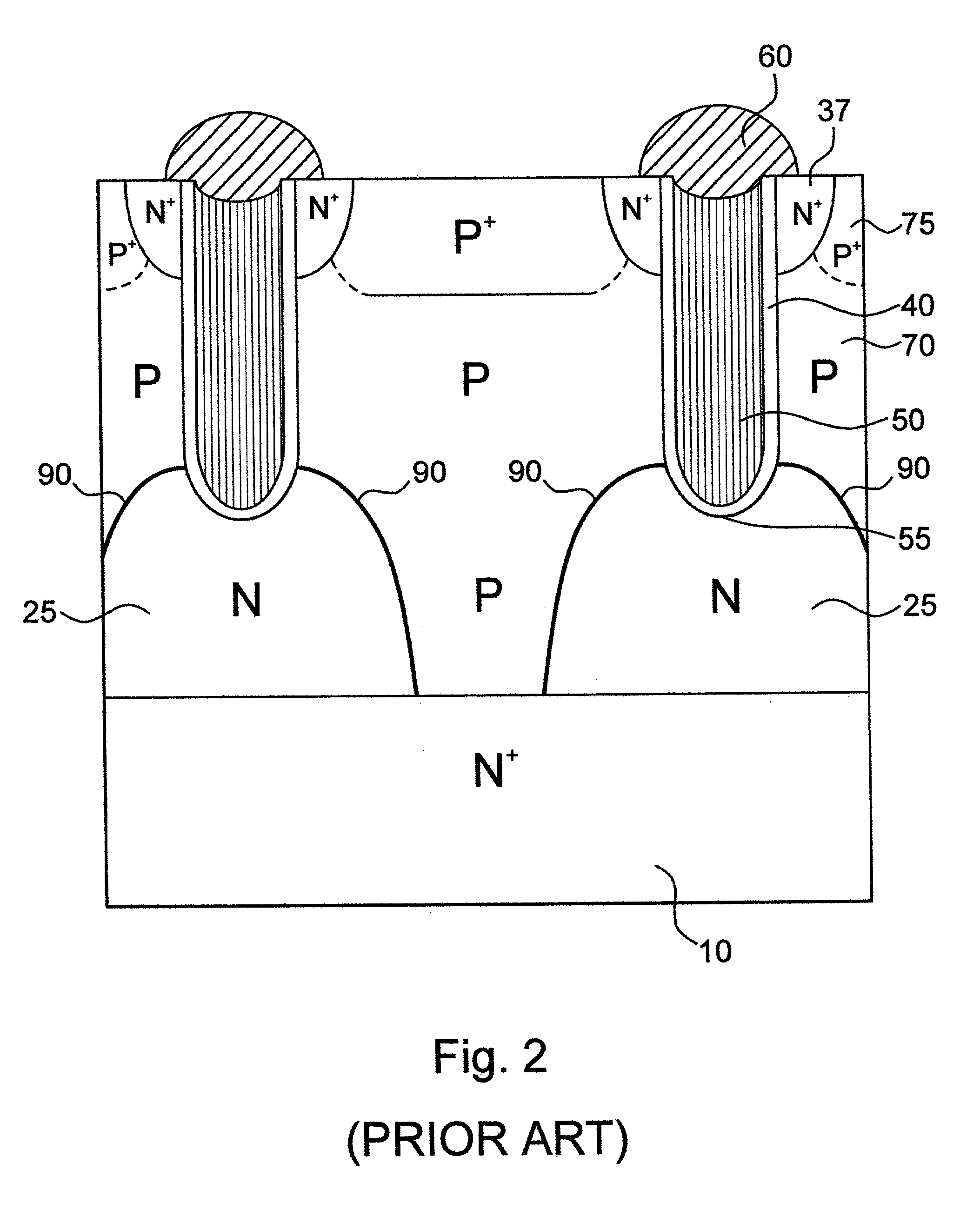Low voltage high density trench-gated power device with uniformly doped channel and its edge termination technique
a high-density, trench-gated technology, applied in the direction of semiconductor devices, electrical devices, transistors, etc., can solve the problems of high channel leakage current, poor high-temperature performance, and device susceptible to punch-through breakdown
- Summary
- Abstract
- Description
- Claims
- Application Information
AI Technical Summary
Benefits of technology
Problems solved by technology
Method used
Image
Examples
Embodiment Construction
[0019] This invention addresses and resolves the problems of the prior art devices described above. See FIG. 3. The invention's device comprises an N.sup.+-type substrate 10, N-type drift regions 27, a P-type epi-layer 72, trenches 80, gate oxide 40, polysilicon 50, BPSG 60, N.sup.+-type source regions 37, and P.sup.+-type body regions 75. The illustrated conductivity types may of course be reversed as needed. By contrast with the prior art, the invention merges together the implanted drift regions 27. The prior art of FIG. 2 keeps the regions separated to provide a bulk resurf effect that lowers the on resistance and increases the depletion of the drift region during reverse votage conditions to raise the limits of the sustaining reverse voltage. Instead of the long, slanted boundary 90 between P-type epi-layer 70 and drift region 25 as shown in FIG. 2, the invention produces a shorter, more-level boundary 90a between P-type epi-layer 72 and drift region 27 as shown in FIG. 3. In e...
PUM
 Login to View More
Login to View More Abstract
Description
Claims
Application Information
 Login to View More
Login to View More - R&D
- Intellectual Property
- Life Sciences
- Materials
- Tech Scout
- Unparalleled Data Quality
- Higher Quality Content
- 60% Fewer Hallucinations
Browse by: Latest US Patents, China's latest patents, Technical Efficacy Thesaurus, Application Domain, Technology Topic, Popular Technical Reports.
© 2025 PatSnap. All rights reserved.Legal|Privacy policy|Modern Slavery Act Transparency Statement|Sitemap|About US| Contact US: help@patsnap.com



